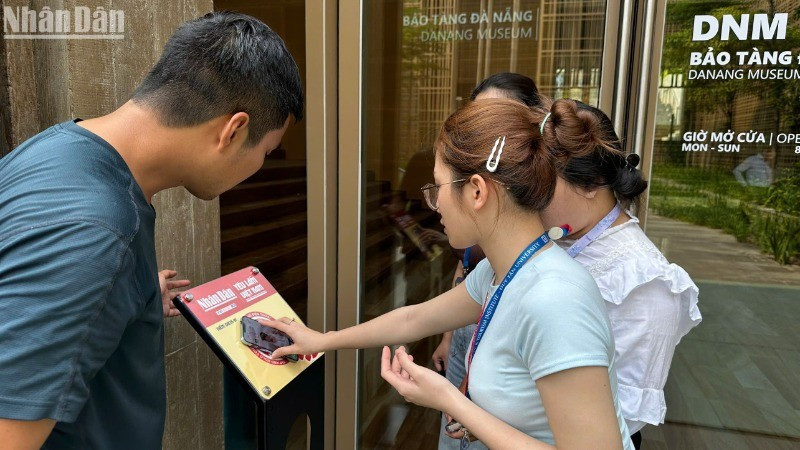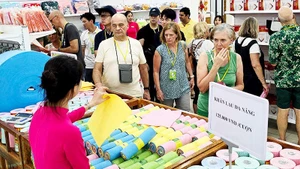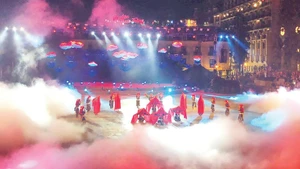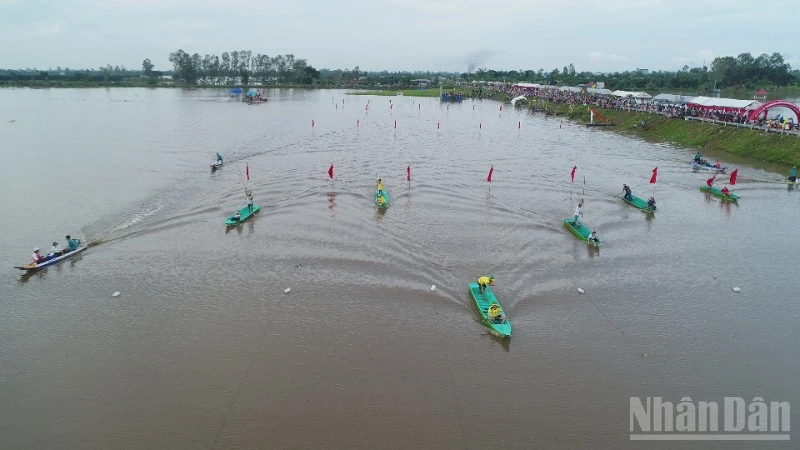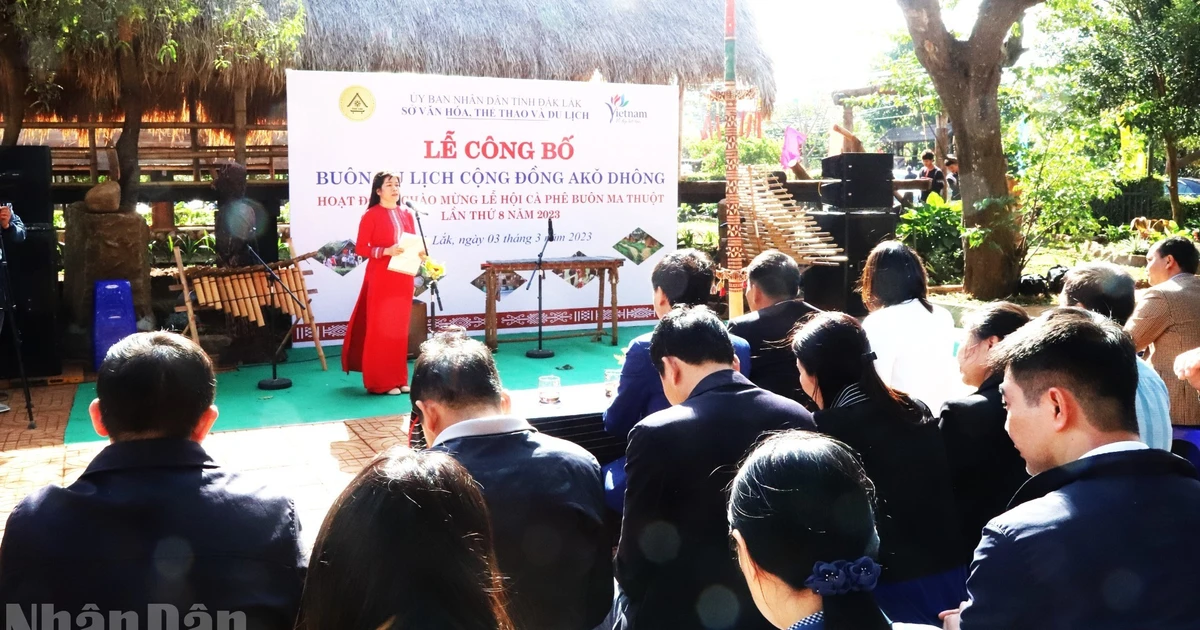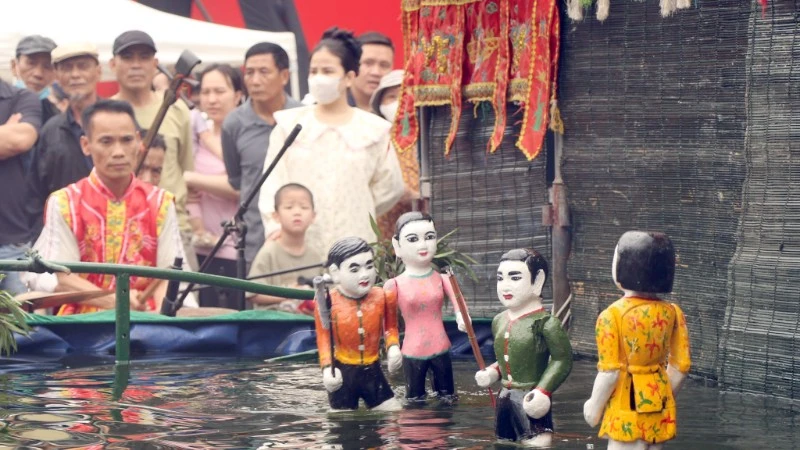The events were part of activities to commemorate the 50th anniversary of the South Liberation and National Reunification (April 30, 1975-2025), and to promote the relic sites around the country, contributing to boosting Vietnam’s tourism development.
The project’s NFC boards, which were designed in red and yellow inspired by the Vietnamese national flag, were placed at the Da Nang Museum, Hai Chau Communal House national relic site and Hoa Vang Cemetery (also known as Nghia Trung Hoa Vang or Khue Trung Cemetery).
Visitors to these sites can use their smartphones to interact with the NFC chipboards, check in at the locations, save personal photos, and receive information about the sites, relics, or destinations.
Each NFC board provides stories, images, videos, or 3D models related to the location where it is installed. It also offers search functions, navigation, and detailed information to help visitors explore the site and nearby attractions.
Once visitors complete check-ins at all NFC-equipped sites in a given locality, they will receive a digital certificate and a gift from the programme. Additionally, the interactive boards facilitate navigation, information retrieval, and guided exploration of surrounding destinations.
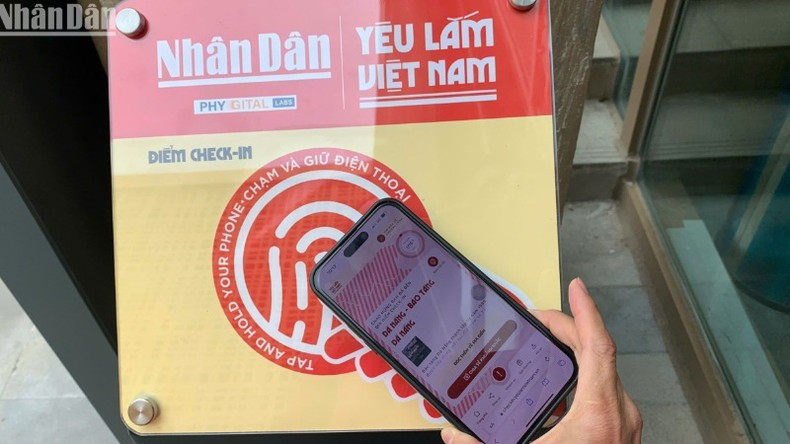 |
| Visitors experience check-in at the Da Nang Museum by scanning the NFC-enabled board. (Photo: ANH DAO) |
As one of three selected locations for installing NFC-enabled boards in the central city, the Da Nang Museum is a key project. It has been recently completed, inaugurated, and opened to visitors just in time for the 50th anniversary of the Liberation of Da Nang City (March 29, 1975 –2025).
Meanwhile, Hai Chau Communal House is considered one of the most popular landmarks in Da Nang, attracting both domestic and international tourists every year. It is recognised as the oldest communal house in the central coastal city and is a national historical and cultural relic site. It leaves a lasting impression on visitors exploring Da Nang.
Hoa Vang Cemetery National Historic Site was established in 1866 in Nghi An Village, formerly part of Phuoc Tuong District, Hoa Vang County. The site preserves the sacred spirit of the land and honours the heroic sacrifice of warriors who built the village and fought bravely against the Franco-Spanish allied forces in the early days of resistance. It was officially recognised as a national historical relic site by the Ministry of Culture, Sports, and Tourism in 1999.
By installing NFC boards at these three significant historical sites, the "Love Vietnam So Much" project aims to promote digital transformation applications, enhance the efficiency of cultural heritage management and utilisation, and widely spread the historical and cultural values of the region. This initiative is also expected to make great contributions to the sustainable development of Da Nang’s tourism industry.
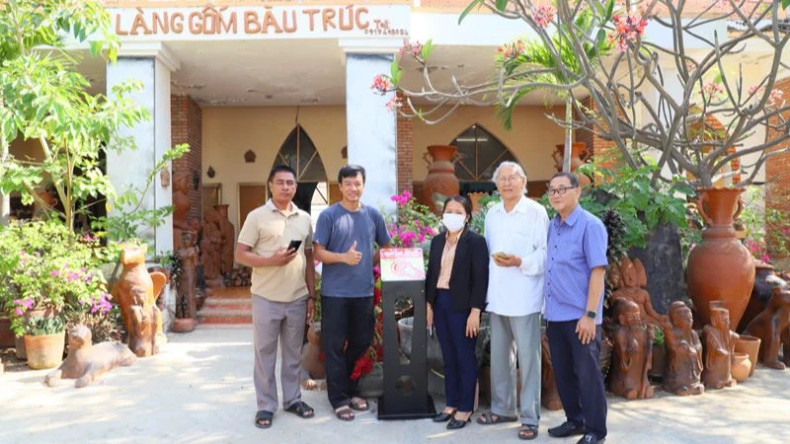 |
| The NFC board is installed at Bau Truc Pottery Cooperative in Phuoc Dan Town, Ninh Phuoc District, Ninh Thuan Province. |
On the same day, the NFC chip-embedded boards from the project were also installed at three destinations in the south-central coastal province of Ninh Thuan including Bau Truc Pottery Cooperative in Phuoc Dan Town of Ninh Phuoc District, Po Klong Garai Tower in Do Vinh Ward of Phan Rang-Thap Cham City, and Rai Cave within Nui Chua National Park in Vinh Hai Commune of Ninh Hai District.
These smart stations have been strategically placed in easily accessible and visible locations, allowing visitors to interact with them using smartphones. Through NFC technology, visitors can seamlessly connect with the "Love Vietnam So Much" website.
